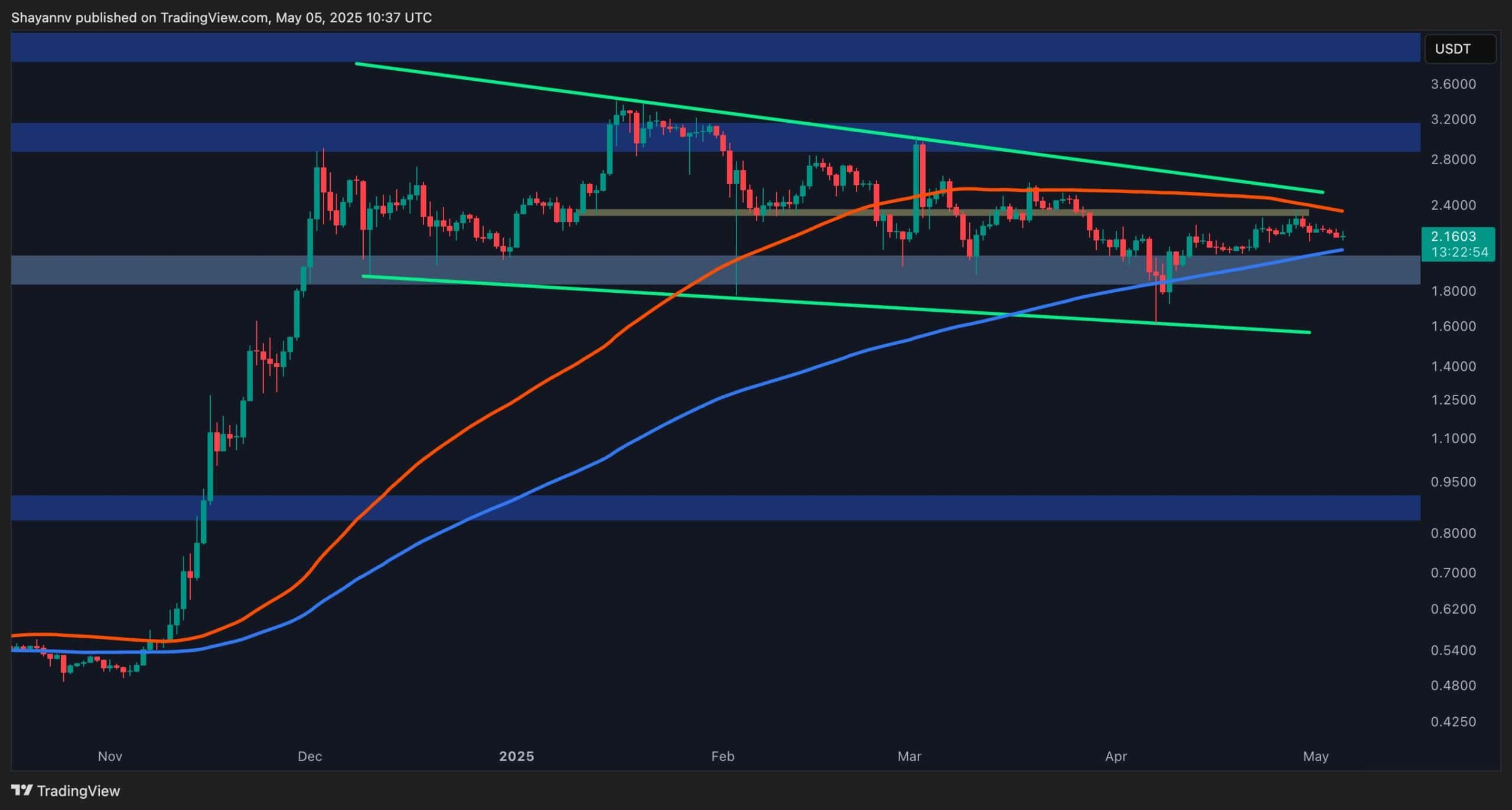Bitcoin’s powerful rally over the last few weeks has driven the price back near the $95,000 mark, but recent chart signals are pointing to possible turbulence ahead. The current structure, as seen on both the daily and hourly timeframes, reveals that BTC price might be preparing for a healthy pullback or even a sharper correction if critical support levels fail. Let's dive deep into what the charts are actually saying.
Bitcoin Price Prediction: Momentum Falters Near Multi-Month Resistance
 BTC/USD 1 Day Chart- TradingView
BTC/USD 1 Day Chart- TradingViewOn the daily Heikin Ashi chart, Bitcoin price has printed its first red candle after several consecutive green sessions—indicating a potential short-term top forming around $95,000. This zone, previously marked by rejection back in March, is proving to be a persistent barrier. The MA Ribbon, which includes the 20, 50, 100, and 200 SMAs, presents a crucial resistance confluence between $91,500 and $94,000. The price is now trading just slightly above the 200-day SMA ($90,309), which historically acts as a make-or-break zone for trend continuation.
What makes this setup delicate is the flat structure of the 50-day and 100-day SMAs. These moving averages are not sloping steeply upward yet, indicating that although the momentum has returned, the medium-term trend hasn’t fully shifted into bullish territory. The daily Accumulation/Distribution Line (ADL) remains elevated, suggesting that smart money hasn’t aggressively exited yet—but any signs of further weakness could trigger significant profit-taking.
Hourly Chart: Early Signs of Breakdown?
 BTC/USD 1 Hr chart- TradingView
BTC/USD 1 Hr chart- TradingViewThe hourly chart gives us a more granular view of short-term weakness. After failing to break above $96,000, Bitcoin retraced sharply and is currently hovering near $94,400. The price has slipped below the 20- and 50-SMA lines, with the 100- and 200-SMAs now acting as overhead resistance around $95,000–$96,000. This crossover from support to resistance could be a red flag that momentum is waning.
The Bitcoin price structure is also forming a potential descending triangle pattern, which often precedes bearish breakdowns. Moreover, the recent recovery candles lack conviction, suggesting that bulls may be running out of steam. ADL on the hourly chart is starting to flatten after rising steadily throughout the previous rally. This could indicate a pause in accumulation, and possibly the start of mild distribution.
Key Support Levels: Where Could Bitcoin Drop Next?
The first major support to watch is the 200-day SMA on the daily chart at $90,309. If Bitcoin closes a daily candle below this level, it could trigger further sell pressure and shake weak hands. Below $90K, the $86,000–$88,000 region becomes the next critical area, which aligns with the 50-day SMA. Should this zone fail, a steeper drop toward $78,000 becomes increasingly likely.
The worst-case scenario would be a revisit of $70,000, which served as a macro support zone during previous consolidation phases. While this drop would represent a ~25% correction from recent highs, such pullbacks are not unusual in Bitcoin’s historical bull market cycles.
Bitcoin Price Prediction: Healthy Correction or Start of a Slide?
Bitcoin price is still in an overall bullish structure, but the short-term signals are flashing yellow. Consolidation below $95,000, weakening hourly momentum, and resistance from key moving averages suggest the path of least resistance could be lower in the coming days. A breakdown below $90,000 could accelerate downside momentum, potentially dragging the price into the low $80,000s or even the $70,000 region in a high-volatility scenario.
However, unless we see massive volume accompanying this move, such a pullback could represent a much-needed reset before the next leg up. Long-term trend supporters would likely view any dip toward $78K–$70K as a strategic buying opportunity.
BTC price action over the next few days will be pivotal in determining whether this is just a pause or the start of a broader correction.
















 English (US) ·
English (US) ·